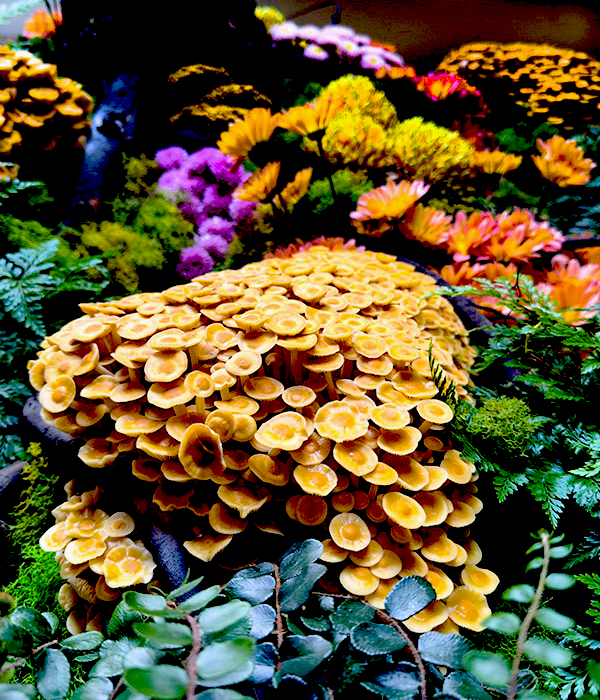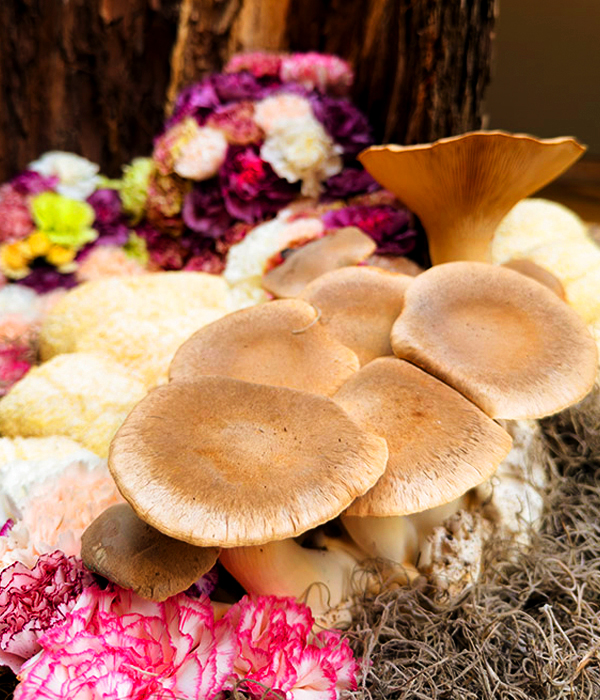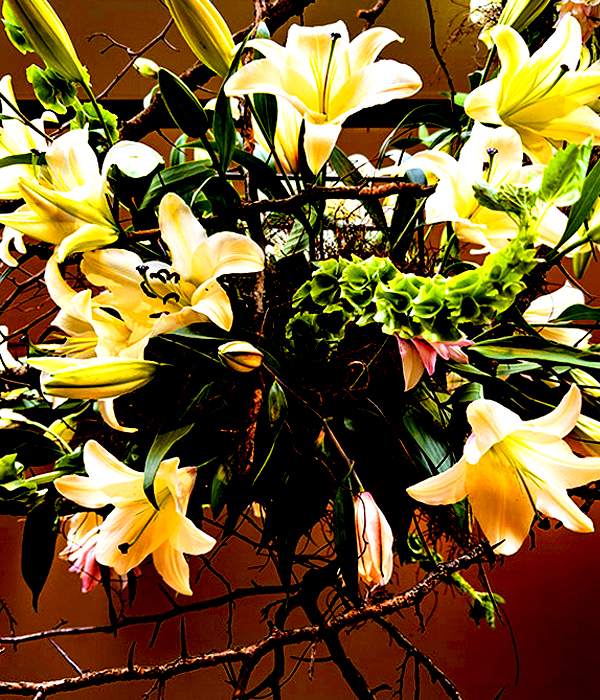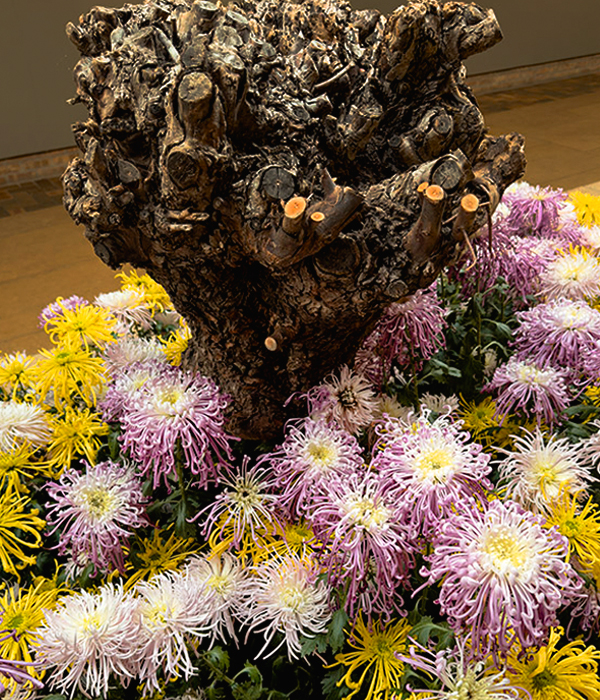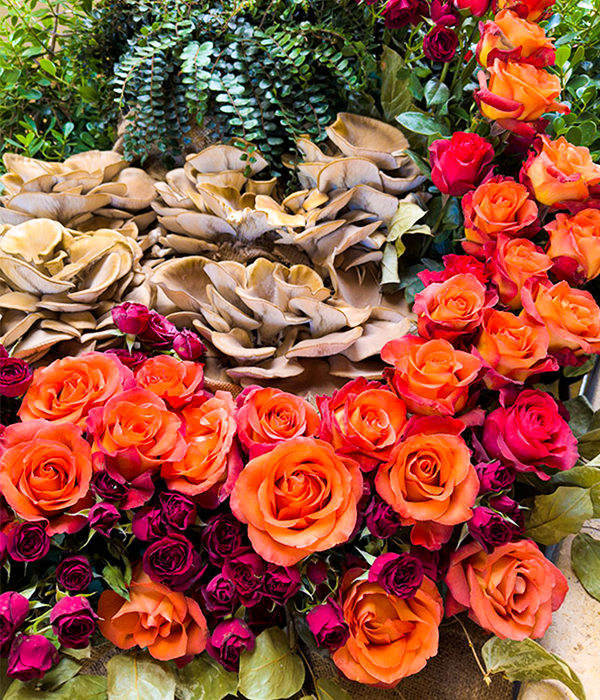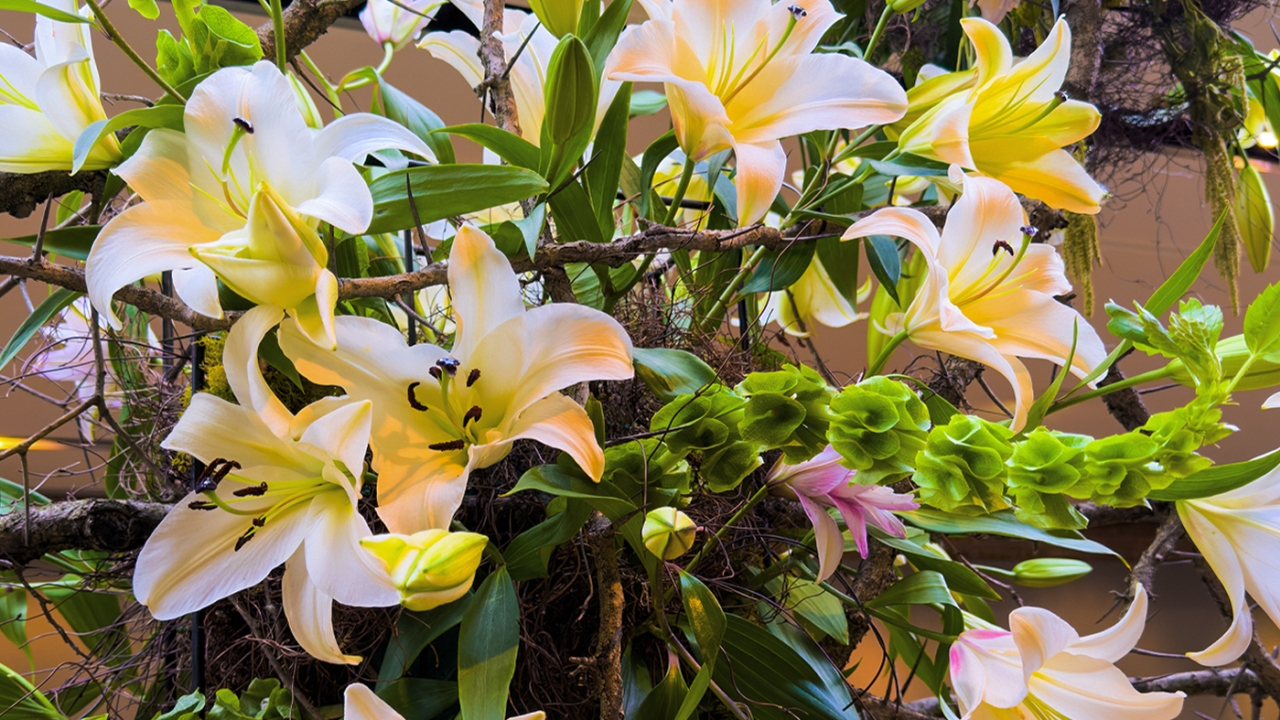

The Last Show
Before heading for mulch piles,
these plants take one final star turn.
At the Chicago Botanic Garden, even in death, plants have one final performance.
As the days shorten, leaves fall, and the season itself feels like a long exhale, the Krehbiel Gallery will host The Last Show, a striking new installation that honors the Garden’s dearly departed plant material. Imagine root flares, weathered stumps, and twisted branches taking center stage. Once bound for the mulch pile, these remnants now take a last autumnal bow as art before they return to nourish the living collection.


